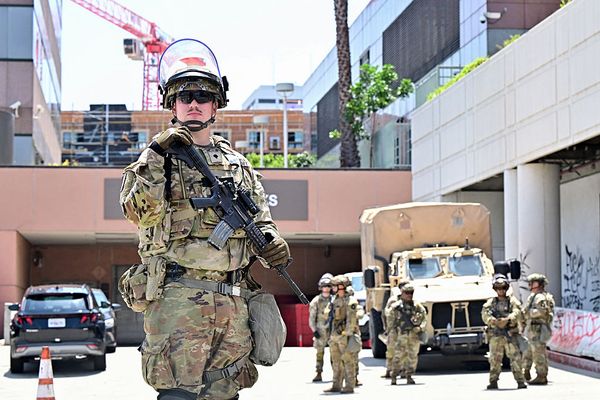
Domestic terrorism is a young man’s game. I have no idea why. You’d think it would be the other way around — old men, having lived most of their lives, tempted to go out in a blaze of imagined glory for whatever grudge is stuck in their wrinkly craws.
But no. It’s the young who pitch away others’ lives, and their own, too, for what always amounts to nothing.
Take the idiot who shot up the 4th of July parade in Highland Park last year. He was 21. You shouldn’t include the killer in the circle of sympathy, but I do think about that guy, sitting in jail, night after night. For the rest of his life. What must he be thinking? Maybe if you’re the kind of person who could do something like that, you don’t have the usual human feelings you’d expect to find in a person.
Timothy McVeigh was 26 when he blew up the Murrah Building in Oklahoma City, killing 168 people, including 19 children in a day care center. He was executed in 2001; McVeigh is as eloquent an argument for the death penalty as I can imagine. Yes, it’s sometimes administered unjustly in an overburdened and racist criminal justice system. But some crimes cry out for it.
Ted Kaczynski, the Unabomber, was a little older — his first bomb exploded, at Northwestern University, two days after his 36th birthday. Living in a cabin in Montana, he conducted his bombing campaign — 16 bombs over 17 years — while the government fruitlessly tried to track him down, distributing a drawing from a witness who saw him at a post office, a man in sunglasses and a hoodie. It wasn’t much help; his brother ended up turning him in, after recognizing the style of the writing in the rambling manifesto he forced two newspapers to print.
Kaczynski died in June, a suicide — finally hurting someone who deserved it — bringing up his crimes all over again. The media is funny that way. We only need a pretext, a transition, any excuse to unspool the tale once again. “Tylenol? Funny you should mention that....”
I guess the justification is that some people don’t know.
James Lewis, prime suspect in the 1982 Tylenol killings, died in Boston Sunday, so we revisit the crime — seven people murdered by poisoned capsules in the Chicago area — that, more than any other, affects our daily lives, as we waste untold billions of hours trying to claw our way through tamperproof blister packs, foil seals, plastic bottle neck rings and all the various measures intended to ensure that somebody doesn’t try to use our medicine or our food to poison us.
Because they would. That is perhaps the most jarring aspect of the Tylenol killings, one not mentioned in the recent coverage. There were copycat crimes. Hundreds. Acid in eye drops. Poisoned chocolate milk. Insecticide in orange juice. Another five people died. Why? Some were disaffected spouses who saw a chance to murder their mates. Others just wanted to hurt strangers, for the fun of it. There is a lot of crazy in the world.
But not a lot of justice. Lewis went to prison for 12 years for trying to extort money from Johnson & Johnson, whose response to the killings became a textbook example of how corporations should react to disaster — they pulled 31 million bottles of Extra Strength Tylenol off the shelves nationwide, writing off some $100 million in 1982 dollars. An approach that Boeing would have done well to emulate when they were tap-dancing and blame-shifting around the 737 Max fiasco.
Lewis was never charged in the actual killings, however, and not for lack of trying. This was before all the video surveillance we have now, but it does make me wonder, as much as we feel uncomfortable with all the cameras in public places — 1984! — if they had them then, maybe the killer would have been nabbed visiting a few Jewels to return boxes of poisoned Extra Strength Tylenol.
We’ve become quite good at protective systems — blister packs, video cameras. But the greatest societal protection — the ability to empathize with others, with people we do not know — is not nearly as perfected. Most people are good-hearted, and that is why these cases so fascinate — not just the tragedy of lives cut short, but the brokenness of those doing the cutting. We want to understand something that cannot be understood.







